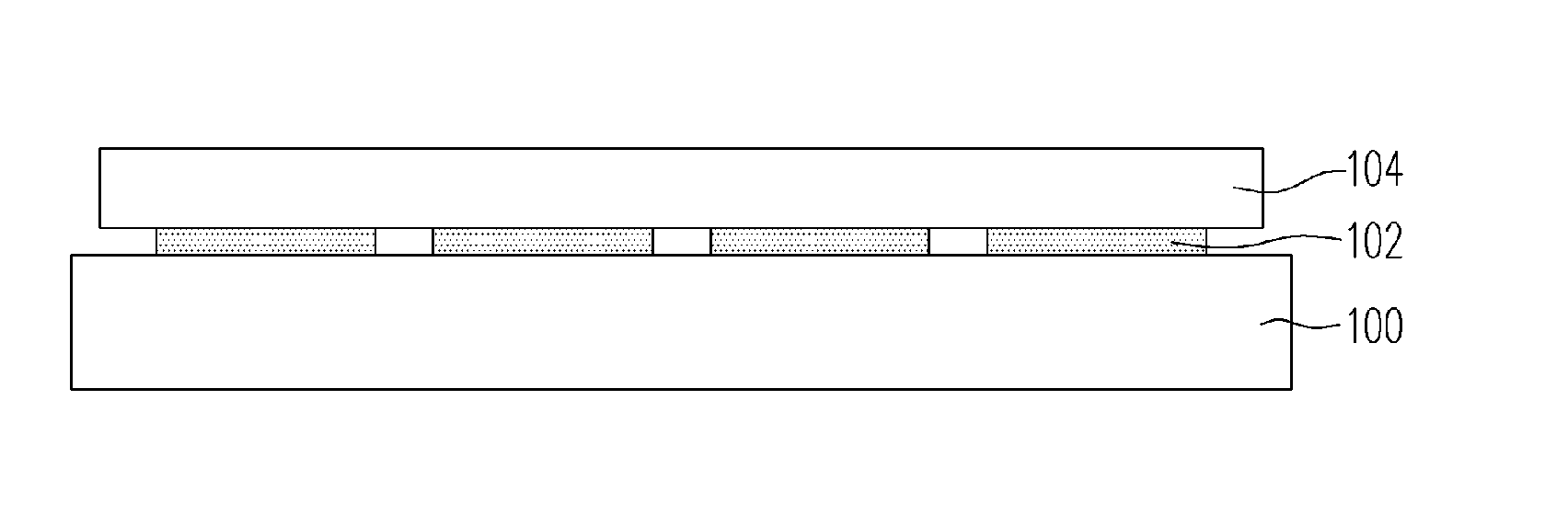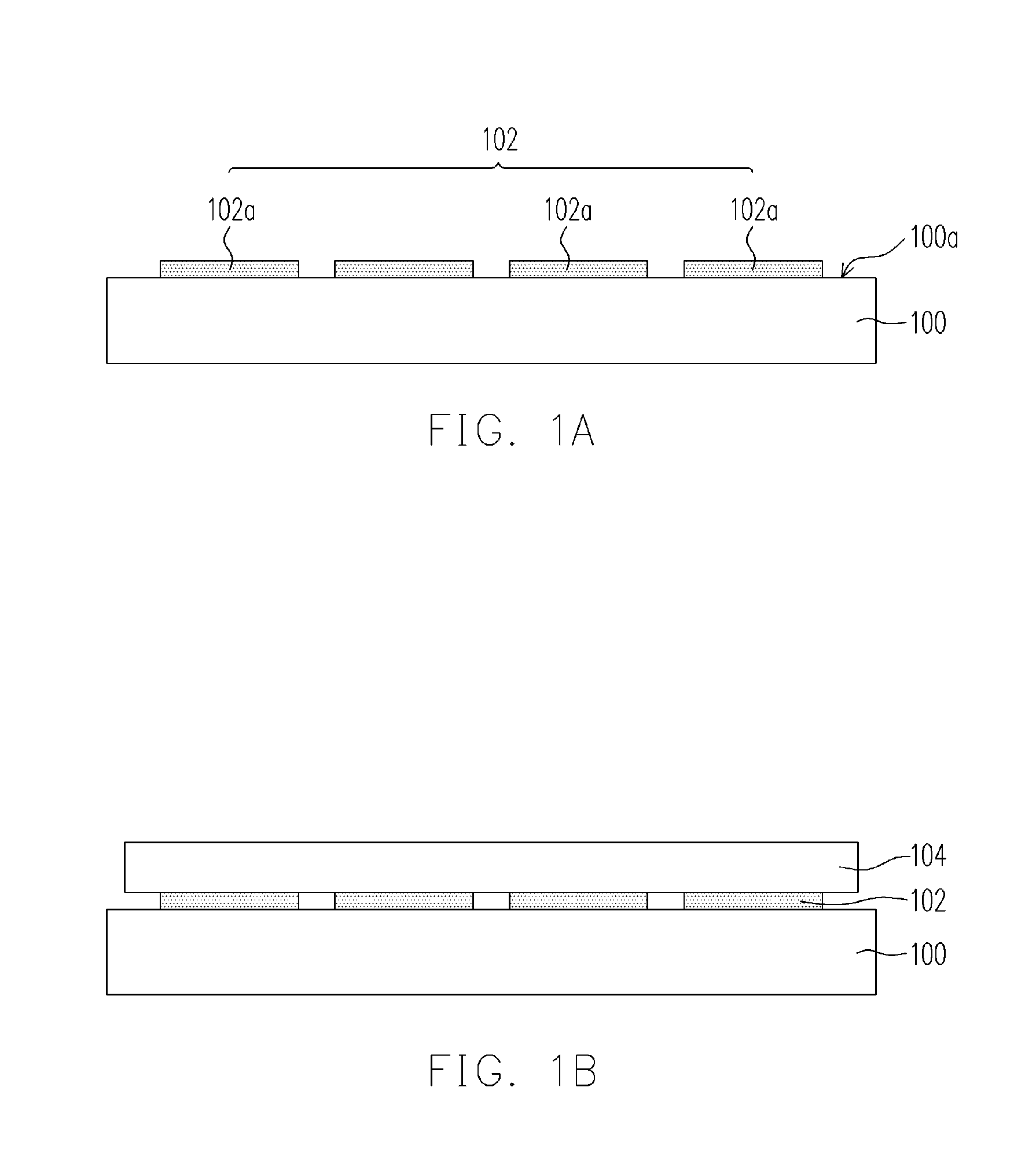Method for manufacturing a flexible display
a flexible display and manufacturing method technology, applied in the direction of identification means, instruments, signs, etc., can solve the problems of large amount of adhesive material for the entire coating of adhesive material over the supporting substrate, affecting the yield of devices formed over the flexible substrate, and the inability to control the debonding effect well
- Summary
- Abstract
- Description
- Claims
- Application Information
AI Technical Summary
Benefits of technology
Problems solved by technology
Method used
Image
Examples
Embodiment Construction
[0035]FIGS. 1A through 1B are cross-sectional views illustrating a method for supporting a flexible substrate according to a preferred embodiment of the invention. As shown in FIG. 1A, a supporting substrate 100 is provided. The supporting substrate 100 is disposed on a carrier (not shown) and the material of the supporting substrate 100 includes, for example but not limited to, refractory material. Preferably, the material of the supporting substrate 100 is plastic or glass. Thereafter, an adhesive material layer 102 is formed on a surface of the supporting substrate 100. The adhesive material layer 102 is composed of several adhesive substances 102a. The adhesive substances 102a are located on the supporting substrate 100 in a discrete arrangement. FIGS. 2A through 2E are schemas showing various arrangements of the adhesive substances according to one preferred embodiment of the invention. As shown in FIGS. 2A, 2B, 2C, 2D and 2E, the aforementioned discrete arrangement can be, for...
PUM
| Property | Measurement | Unit |
|---|---|---|
| flexible | aaaaa | aaaaa |
| adhesive | aaaaa | aaaaa |
| refractory | aaaaa | aaaaa |
Abstract
Description
Claims
Application Information
 Login to View More
Login to View More - R&D
- Intellectual Property
- Life Sciences
- Materials
- Tech Scout
- Unparalleled Data Quality
- Higher Quality Content
- 60% Fewer Hallucinations
Browse by: Latest US Patents, China's latest patents, Technical Efficacy Thesaurus, Application Domain, Technology Topic, Popular Technical Reports.
© 2025 PatSnap. All rights reserved.Legal|Privacy policy|Modern Slavery Act Transparency Statement|Sitemap|About US| Contact US: help@patsnap.com



